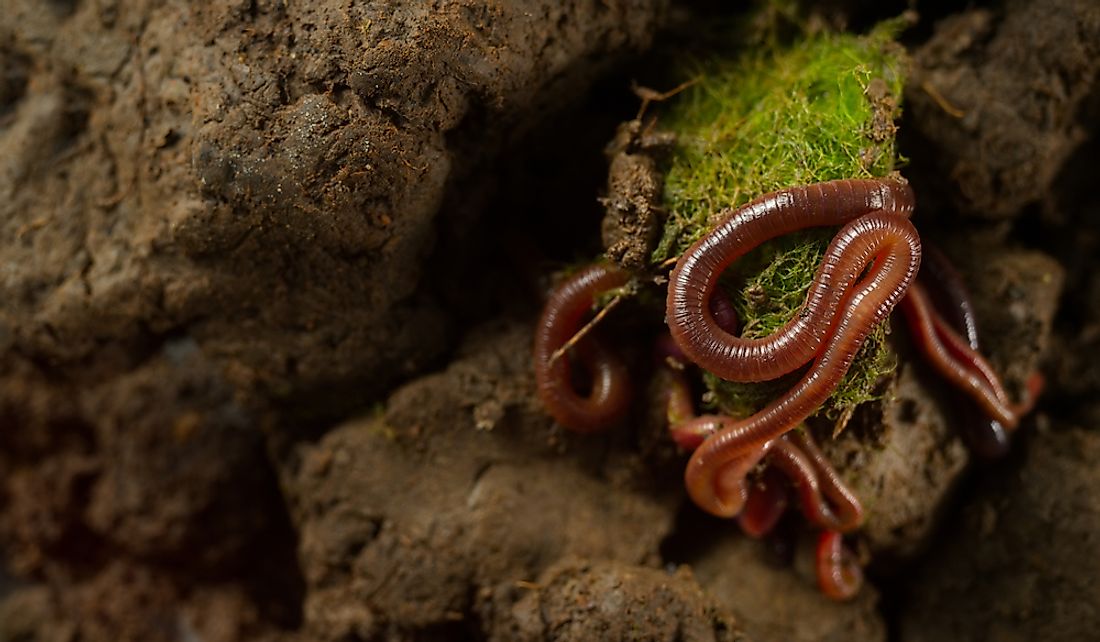What Do Earthworms Eat?

Earthworms are tube-shaped, segmented worms that are commonly found in soils. They are one of the most important species in the food chain for both small and medium-sized animals such as fish, birds, and raccoons. They also help in the aeration and breaking down of soil while obtaining food from smaller organisms. Earthworms are generally hermaphrodites, meaning that an individual has both the male and female sex organs. They lack internal skeleton but maintains the body structure coelom chamber filled with fluid and functions as a hydrostatic skeleton. An earthworm has a simple digestive system that runs through its body length.
Earthworm Diet
Earthworms eat a wide range of matter. They are mainly described as omnivores as they feed on both plants and animals. However, some researchers describe them as detrivores, meaning that they eat decaying plants and animals. Earthworms eat small micro-organisms and organic matter and will feed on dead leaves and grass while on the surface of the ground. They also feed on vegetables and berries. While underneath the ground, earthworms feed on fungi, algae, and bacteria. They also eat fungus called mycorrhiza which grows on roots of certain plants. Very few species feed on soil.
Earthworms kept as pets can be fed on kitchen remains such as fruits and vegetables. They should be given meat and dairy products in small quantities and should not be fed on processed food. Worms can eat about their own body weight in food per day. The smaller the food piece is, the easier it is for the earthworm to digest and process it. Importantly, worms will avoid rotting foods since they are oxygen deprived (anaerobic). Earthworms breathe through the skin and anaerobic conditions make it difficult for the worms to breathe.
Digestive System of an Earthworm
The digestive system of an earthworm is a straight tube extending from the mouth to the anus and differentiated into buccal cavity, pharynx, esophagus, intestine, gizzard, and crop. The buccal cavity runs from the mouth to the first two segments while the pharynx runs about four segments in length. Once the food enters the mouth, it is sucked into the pharynx where mucus is secreted by the pharyngeal gland. Food is then moved into the esophagus where calcium is injected into the blood to maintain proper food PH. From esophagus, the food moves into the gizzard and crop. The gizzard grinds the food by the strong muscular contractions. Once the food is properly ground, it continues through the intestine for digestion. The intestine secretes several enzymes including pepsin, amylase, and cellulose used in the digestion of protein, polysaccharide, and cellulose respectively.
Major Benefits of Earthworms
Earthworms play an important role is enhancing soil fertility. They convert large organic matters into rich humus. This is achieved by pulling below the large organic matter and shredding it into pieces while mixing it with soil. Worm feces or cast also contain a lot more hummus than some topsoils. They contain partially digested matters which have a lot of nutrients in them. The burrowing activities of the worms also help in maintaining the soil structure, drainage, and aeration.











